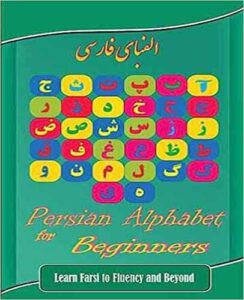Table of Contents
ToggleUnderstanding the Importance of Proverbs
Learning a new language involves more than just mastering vocabulary and grammar. To truly understand and appreciate a language, one must also become familiar with its idiomatic expressions and proverbs. Persian proverbs offer a rich cultural insight and can be a delightful addition to the language learning experience. This article explores practical strategies for teaching Persian proverbs to non-native speakers, helping them enhance their language skills and cultural understanding.
Persian, also known as Farsi, has a rich literary and cultural heritage. Proverbs are integral to this heritage, encapsulating wisdom, humor, and cultural values in concise and memorable expressions. Teaching Persian proverbs to non-native speakers enriches their vocabulary and provides deeper insights into Persian culture and ways of thinking.

Cultural Insights
Proverbs reflect the values, beliefs, and traditions of a culture. By learning Persian proverbs, non-native speakers better understand Persian cultural nuances and societal norms. This cultural awareness enhances their language competence and helps them communicate more effectively with native speakers.
Enhancing Vocabulary and Comprehension
Proverbs often use vivid imagery and metaphorical language, making them a powerful tool for expanding vocabulary and improving language comprehension. Understanding the context and meaning of proverbs helps learners grasp abstract concepts and idiomatic expressions, essential for advanced language proficiency.
Engaging and Memorable Learning
Proverbs are typically short, catchy, and easy to remember, making them an engaging way to learn new language concepts. They can be used to create memorable lessons that stick with learners, making the language-learning process more enjoyable and effective.
Effective Strategies for Teaching Persian Proverbs
Contextual Learning
Introduce proverbs in context to help learners understand their usage and meaning. Use stories, dialogues, and real-life scenarios where the proverbs naturally fit. This approach allows learners to see how proverbs are applied in everyday conversations and enhances their ability to use them appropriately.
Storytelling and Anecdotes
Use storytelling and anecdotes to explain the origins and meanings of proverbs. Many Persian proverbs have exciting backstories that can capture learners’ interest and make the learning experience more engaging. Relating proverbs to familiar situations can also help learners remember them better.
Visual Aids and Illustrations
Visual aids and illustrations can be powerful tools for teaching proverbs. Create visual representations of the proverb’s meanings or use images and cartoons to illustrate their context. Visual aids make abstract concepts more concrete and easier to understand.
Interactive Activities
Engage learners in interactive activities such as role-playing, group discussions, and games incorporating proverbs. Activities like matching proverbs with their meanings, creating dialogues using proverbs, or telling stories that end with a proverb can make learning fun and dynamic.
Comparative Learning
Compare Persian proverbs with expressions similar to those in the learners’ native languages. This comparative approach helps learners see the similarities and differences between cultures and languages, deepening their understanding of both. It also makes the learning process more relatable and exciting.
Use of Technology
Incorporate technology by using language learning apps, online resources, and multimedia presentations. Videos, podcasts, and interactive exercises can provide additional exposure to proverbs and reinforce learning. Technology also offers flexibility and variety in teaching methods.
Examples of Common Persian Proverbs
Luck strikes one at home
بخت یکبار در خونه آدم رو میزنه
This proverb emphasizes the idea of making the most of opportunities.
The Apple Doesn’t Fall Far from the Tree
سیب از درخت دور نمیافتد
Like the English proverb, it means that children often resemble their parents in behavior or appearance.
A Friend in Need is a Friend Indeed
دوست در وقت نیاز دوست است
This proverb highlights the value of true friendship, especially during difficult times.
Little by Little, the Bird Builds Its Nest
قطره قطره جمع گردد وانگهی دریا شود
It means that small efforts, when accumulated, can lead to significant achievements.
The Fish Rots from the Head Down
ماهی از سر میگندد
This proverb suggests that leadership failures affect the entire organization.
Challenges and Solutions in Teaching Persian Proverbs
Understanding Cultural Nuances
Non-native speakers may struggle to grasp the cultural context of certain proverbs. To address this, provide detailed explanations and examples highlighting each proverb’s cultural significance and everyday usage.
Language Barriers
Learners with limited Persian proficiency may struggle to understand and use proverbs. Start with simple, commonly used proverbs and gradually introduce more complex ones as their language skills improve. Provide translations and explanations in the learners’ native language if necessary.
Retention and Recall
Proverbs can be challenging to remember and use correctly. Reinforce learning through regular practice and repetition. Encourage learners to use proverbs in their spoken and written language and provide feedback to help them improve.
FAQs
Why are proverbs important in learning Persian?
Proverbs are essential because they offer cultural insights, enhance vocabulary, and improve language comprehension. They reflect Persian culture’s values, beliefs, and traditions, making language learning more engaging and meaningful.
How can I effectively teach Persian proverbs to non-native speakers?
Effective strategies include contextual learning, storytelling, visual aids, interactive activities, comparative education, and the use of technology. These methods help learners understand and remember proverbs better.
What are some common Persian proverbs?
Some common Persian proverbs include “Every House Has Its Own Rules,” “The Apple Doesn’t Fall Far from the Tree,” “A Friend in Need is a Friend Indeed,” “Little by Little, the Bird Builds Its Nest,” and “The Fish Rots from the Head Down.”
What challenges might non-native speakers face when learning Persian proverbs?
Challenges include understanding cultural nuances, language barriers, and retention and recall. Solutions involve providing detailed explanations, starting with simple proverbs, using translations, and reinforcing learning through practice.
How can technology help in teaching Persian proverbs?
Technology offers tools such as language learning apps, online resources, videos, podcasts, and interactive exercises that provide additional exposure and reinforce learning. It also adds flexibility and variety to teaching methods.
Teaching Persian proverbs to non-native speakers is a rewarding endeavor that enriches their language skills and cultural understanding. By using effective strategies such as contextual learning, storytelling, visual aids, interactive activities, and technology, educators can help learners appreciate the beauty and wisdom of Persian proverbs. Overcoming challenges and making the learning process engaging and memorable will ensure that learners understand and enjoy using Persian proverbs in their daily lives.







